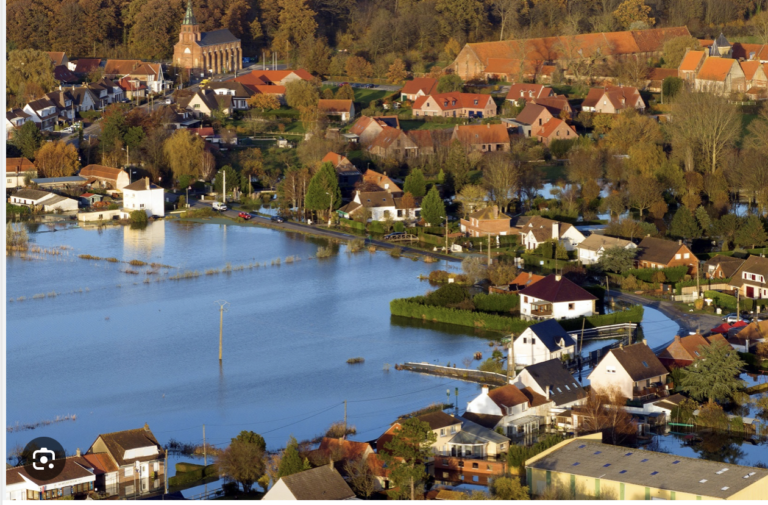In the week since the UN Climate Change Conference (COP28) came to an end, a cyclone slammed into Australia, torrential rains pelted the United States of America and a punishing drought continued to decimate crops in Zimbabwe.
These disasters are a reminder, say experts, that while progress was made at COP28, not nearly enough financing has been devoted to helping communities adapt to extreme weather, which is expected to become more common as the Earth’s climate changes.
“Frameworks and tentative commitments are not sufficient,” said Mirey Atallah, Head of the Nature for Climate Branch at the United Nations Environment Programme (UNEP). “We are no longer operating in an ‘if-and-when scenario’. Countless communities around the world are already suffering the fallout from climate change. Finance and action are needed everywhere, from mitigation, to loss and damage, to adaptation.”
On the climate adaptation front, COP28 started with groundbreaking news. The world agreed to operationalize the Loss and Damage Fund, which will provide financial assistance to the countries most vulnerable to the impacts of climate change. Unveiled in 2022, the fund attracted nearly $300 million in pledges at COP28.
“The new Loss and Damage Fund, though a significant step forward, does not diminish the urgent need for adaptation finance,” said Alvin Chandra, Head of UNEP’s Global Adaptation Network. “As we saw in the latest Adaptation Gap Report, every dollar invested in adapting to coastal flooding could save $14 from loss and damage to the economy.”
Published by UNEP in the run up to COP28, this report set the scene for the conference’s discussions, highlighting a widening adaptation finance gap in developing countries – estimated at $US194 to US$366 billion per year. The publication was cited in the COP28 final text on the Global Stocktake, a key process to assess the progress of climate action.
Beyond the Loss and Damage Fund, COP28 was not short on commitments. The United Arab Emirates President announced a US$30 billion fund for climate solutions, aiming to draw a total of US$250 billion of investments by 2030 for adaptation and mitigation.
The United States pledged $3 billion to the Green Climate Fund, taking its second replenishment to almost US$13 billion, of which half is devoted to adaptation. A total of US$1 billion was announced for climate and health initiatives, along with almost US$200 million for the Global Environment Facility and around US$170 million for the Adaptation Fund.
Experts were quick to point out, though, that funding announcements alone are not enough.
“It’s not just the amount of adaptation finance that counts. It’s also about the effectiveness and quality of the finance,” said Atallah “We really need to dig deeper into how fast it is reaching the countries and communities that need it the most.”
The COP28 final decision reiterated a call from 2021 for developed countries “to at least double” adaptation finance for developing nations, and an agreement was reached to prepare a report to assess progress on that effort.
Global Goal on Adaptation
On 13 December, a comprehensive framework of targets was agreed upon for the Global Goal on Adaptation, which is designed to build the resilience of countries to climate change.The goal was initially announced in Paris in 2015, but since then, disagreements have hobbled the creation of targets, metrics and indicators for the goal.
“This is a big deal for everyone wanting to scale-up adaptation ambition”, said Chandra. “In future, countries can work towards a common playbook in their efforts to adapt, which will not only spur transformational action but also help close persistent finance gaps.”
Key targets to be achieved by 2030 include strengthening resilience to water-related climate hazards, attaining climate-resilient food production, and reducing the adverse effects of climate change on poverty eradication and livelihoods. A two-year work programme has been kickstarted to establish indicators for measuring progress towards the goal’s targets.
“To be truly impactful, adaptation needs to be tracked. This framework sets ambitious targets that will help to plan, track, and evaluate the effectiveness of adaptation,” said Chandra.
National adaptation plans
At COP28, there was a clear recognition that countries are making progress in their efforts to develop and implement national adaptation plans, which chart how nations will build their resilience to climate change.
The Global Stocktake noted that 51 countries have now submitted plans, of which 11 were finalized in 2023 – a record number for any year. An increasing number of these plans now include costed frameworks and investment needs.
The COP28 final outcome includes a call for all countries to have their adaptation plans in place by 2030. Experts say these ambitious targets will help direct support and finance to where it is most needed, accelerating action.
Nature-based solutions
Launched at COP28, the State of Finance for Nature report found that global financial flows are still having a detrimental effect on the very ecosystems human wellbeing depends on.
Throughout 2023, via a series of regional workshops and technical submissions, UNEP collaborated with the UN Climate Change secretariat to promote the importance of nature and ecosystems in building climate resilience. The Global Goal on Adaptation now includes a specific target to accelerate the use of ecosystem-based adaptation by 2030. COP28 also shed light on the challenges faced by mountain ecosystems and proposed concrete steps for intervention in 2024 under the Nairobi Work Programme.
The Global Stocktake emphasizes the importance of reversing deforestation by 2030, and it underlines the need to address the “interlinked global crises of climate change and biodiversity loss in the broader context of achieving the Sustainable Development Goals”. The stocktake also specifies that national adaptation plans should cover, “as appropriate”, the dimension of ecosystems.
“At UNEP, we welcome the decision on ecosystems and biodiversity as a concrete overarching target for enhancing resilience and adaptation,” said Atallah. “All ecosystems and all species, irrespective of their conservation status, are the mesh of life on which we depend.”
The 28th session of the United Nations Climate Change Conference (COP28) was held from 30 November to 13 December, 2023 in Dubai, the United Arab Emirates. It aimed to drive action on climate change by reducing emissions and halting global warming. COP28 explored the results from the first-ever Global Stocktake, which assesses progress toward the Paris Agreement goal of limiting global temperature rise to below 1.5°C. For a list of highlights, visit UNEP’s climate action feed.




